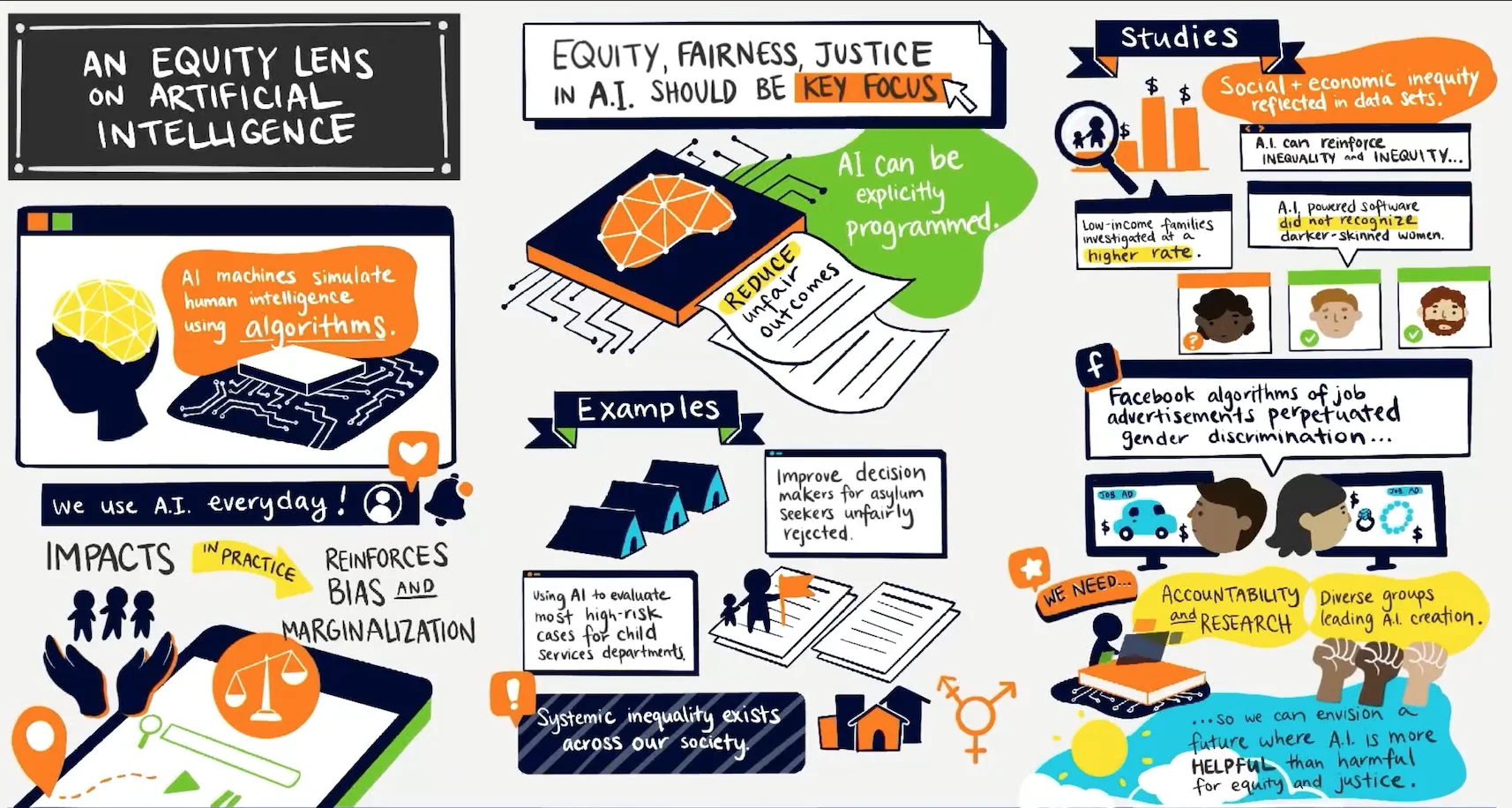New technologies affect the way that we live and work. They create jobs, replace them, and transform them. We have, for example, seen technology facilitate the rise of remote and hybrid work during the pandemic, as well as the many jobs that have been created or changed using digital platforms. With an ever-shifting landscape of new technologies, it is important to ask how they are impacting people and communities that face inequity and marginalization.
Below, we’ve curated a primer of our best scholarly research and insights on this subject.
An Equity Lens on Artificial Intelligence
AI is a double-edged sword, with potential to both mitigate and reinforce bias:
- Because AI uses statistical prediction methods that can be audited, it has the potential to create outcomes that help groups facing marginalization in situations where human decisions may be clouded by cognitive biases.
- Despite this potential, because inequity is often reflected in technologies, some AI can and has reinforced marginalization of certain groups, such as women, gender minorities, and racialized and low-income communities. AI-powered products and services may use biased data sets that reproduce this bias; amplify stereotypes and marginalization, sometimes for profit; and/or widen asymmetries of power.
- The reinforcement of inequity has occurred because of embedded bias or significant omissions in datasets; the complexity and trade-offs involved in aligning AI with social values when profits are also at stake; a lack of transparency from those creating and implementing AI; a lack of accountability to the public or other users of AI; and limited participation by marginalized and diverse groups in the technology sector.
In this video, Yolande Strengers and Jenny Kennedy, authors of The Smart Wife, discuss how the design of feminized digital assistants re-inscribes outdated and unfounded gender stereotypes, and how advanced technology is taking us backwards on gender equity.






